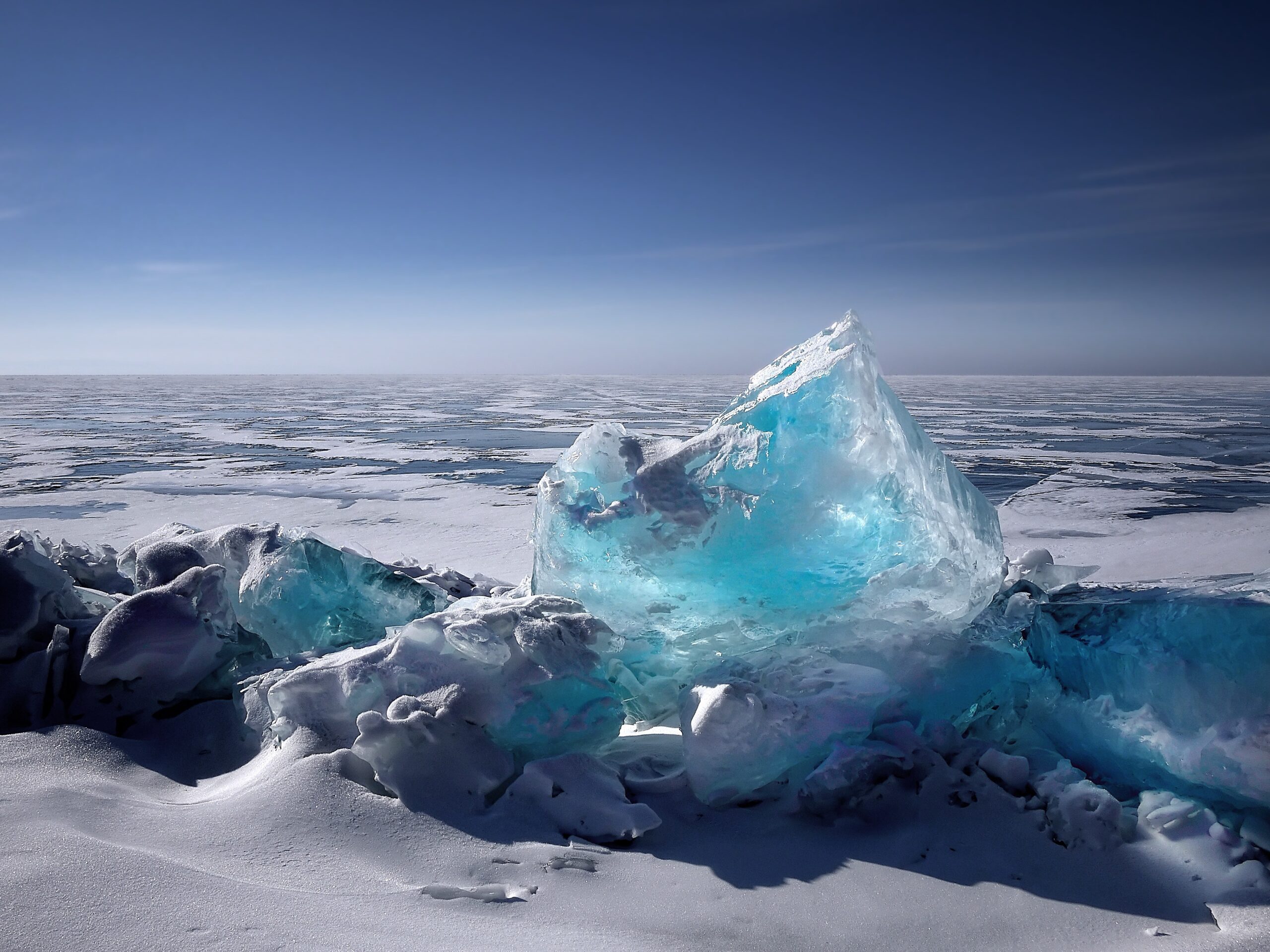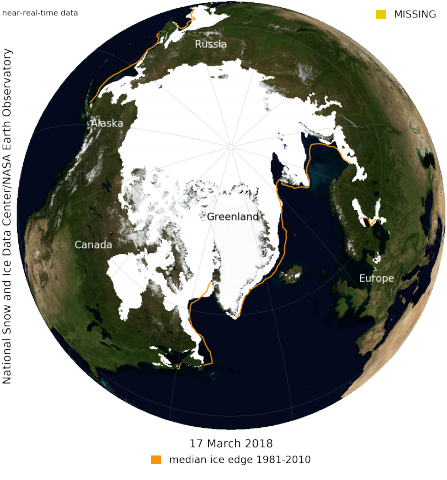When a Maximum is Minimum: What Low Sea Ice Extent Means for the Arctic

In the Arctic, starting in autumn, cold weather causes sea ice to form and grow throughout the winter. By March, sea ice has extended as far as it will for the year, also known as the sea ice maximum. When spring warmth takes hold, the ice retreats again until September, when it reaches the annual sea ice minimum. NASA and the National Snow and Ice Data Center have both announced that Arctic sea ice extent recently reached its winter maximum for 2018. Spring has arrived and the ice is now starting to melt. NASA began measuring sea ice extent from satellites in 1979. This year is the second-lowest maximum on record, surpassed only by last year. The four years with the lowest sea ice maxima are the last four years.
Reports about sea ice extent are usually accompanied by a map, comparing this year to past years (often the 1981-2000 average used as a baseline), or by a graph, with colored lines comparing the seasonal growth and decline of sea ice year by year. These figures are helpful ways of displaying basic information, but of course there is much more to the story than just the aggregate measure of how much of the ocean is covered by sea ice.

Without sea ice, winds create a very different hazard. In the St. Lawrence Island Yupik village of Gambell and the Iñupiat village of Little Diomede, big waves threatened buildings and beaches, compounding the damage from the wind itself. A power outage in Diomede may have contributed to a house fire at the end of the storm. Similar storms in open water conditions have caused major coastal erosion at other villages in northern and western Alaska, undermining buildings and nearly destroying a runway. In a village with no access except by air, that’s a big problem.
Sea ice is important habitat for Arctic marine mammals. It also plays a big role in regulating marine productivity. Sea ice algae grow on the bottom of the ice, supporting the bottom of the food web. By reducing the effects of wind on the water column, the ice helps create stable conditions for the spring plankton bloom that makes the northern Bering and Chukchi Seas among the world’s most productive. Take sea ice away, and we have a very different marine system.
Low sea ice extent at the end of winter also sets the Arctic Ocean up for a major retreat of sea ice over the summer. Weather conditions and other factors will determine how much ice is left at the September sea ice minimum, but thin ice now makes the Arctic susceptible to rapid melting or to winds that blow ice away from much of the ocean. As ice melts earlier in the spring, the open water has more time to warm, which will delay next fall’s freeze-up. Warmer water will also hurt some species and help others, nudging the Arctic marine ecosystem further away from what it has been.
Bowhead whales will continue to migrate north this month, as they have always done. Ringed seals will have pups. Indigenous hunters will be out to provide food for their families and their communities. But the conditions will be a little less familiar. The ice will be a little less reliable. Animals from the waters to the south will come a little farther into the Arctic. The maps and graphs will chart the progress of ice melt and growth, and it will be up to all of us to interpret what that means for the Arctic we care about.
But, there’s hope! At Ocean Conservancy, we work in the U.S. and across the Arctic to help citizens and decision-makers alike understand what’s at stake in this region. We advocate science-based solutions to ensure that Arctic waters remain healthy and clean. This includes working towards treaties designed to ensure cooperation on marine management, the development of a network of marine protected areas, and ensuring we have the best scientific information available to develop management plans for this remote and rapidly changing region.